The Background:
I’ve been a strobe guy since around 1989 when I got my first Novatron 600 watt second power pack, and through the years and through the upgrades to Speedotron and then to Profoto, the workflow has remained essentially the same… I share my workday with the whoosh-hum of fans, the bright pops of light and the confirmation beeps of the packs/heads in order to expose the scene I was to capture.
The Arca-Swiss Monolith view camera that I used to regularly shoot for years certainly provided benefit in maximizing depth of field by swinging the front standard in the direction of my object’s falloff, but on any dimension where you gain with a view camera, you lose somewhere else, and especially with the ever growing pixel density of modern digital backs, I was finding lack with shooting singular, heavily in-camera tweaked images for large reproduction. It would sometimes take me hours to as perfectly as possible, match the registration of the shot the last time the camera was used, even with my recorded set height, tripod height and set images dutifully recorded.
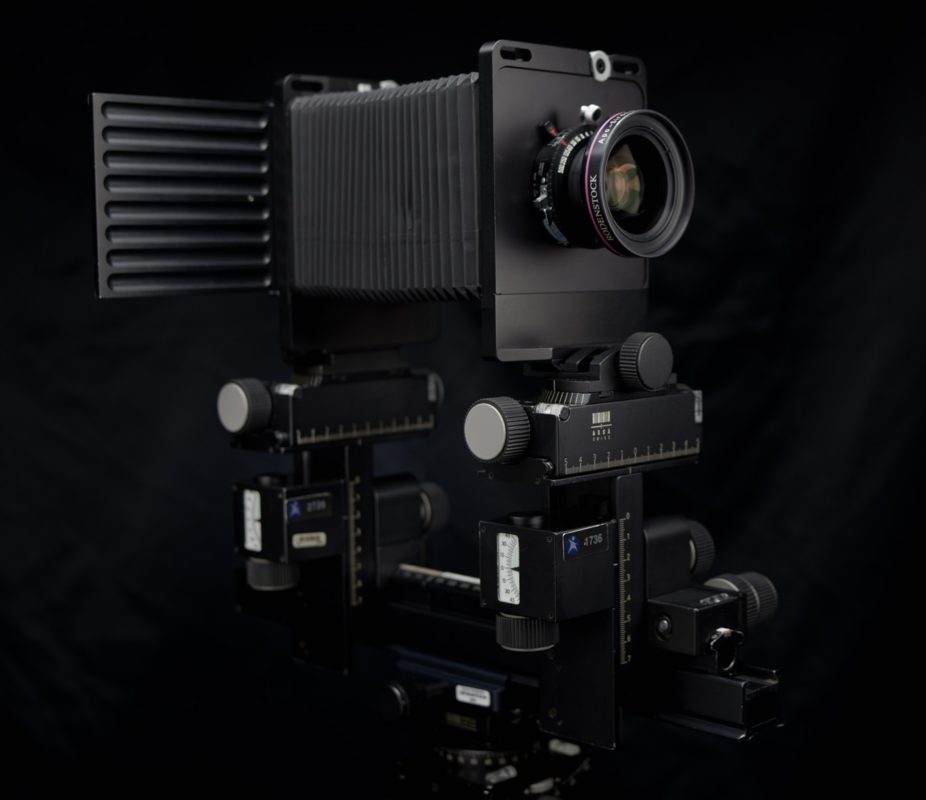
Typically, I’d push the camera in, love what I was seeing on the ground glass, start manipulating the movements while maximizing the focus with a loupe only to find that I could not maintain the focus and so would have to pull the camera back, usually in several increments to where I could keep the entire object in focus, moving my excitement of the image from ‘oooh!’ to ‘oh.’
With 60 megapixel, I was largely fine, but by the time I was shooting 80 and then 100 megapixel, I could no longer increase f-stop due to diffraction while having to reduce the potential of my hardware megapixel increases by the distance I’d have to leave loose in the frame to maintain critical focus. ‘oh darn-it!’
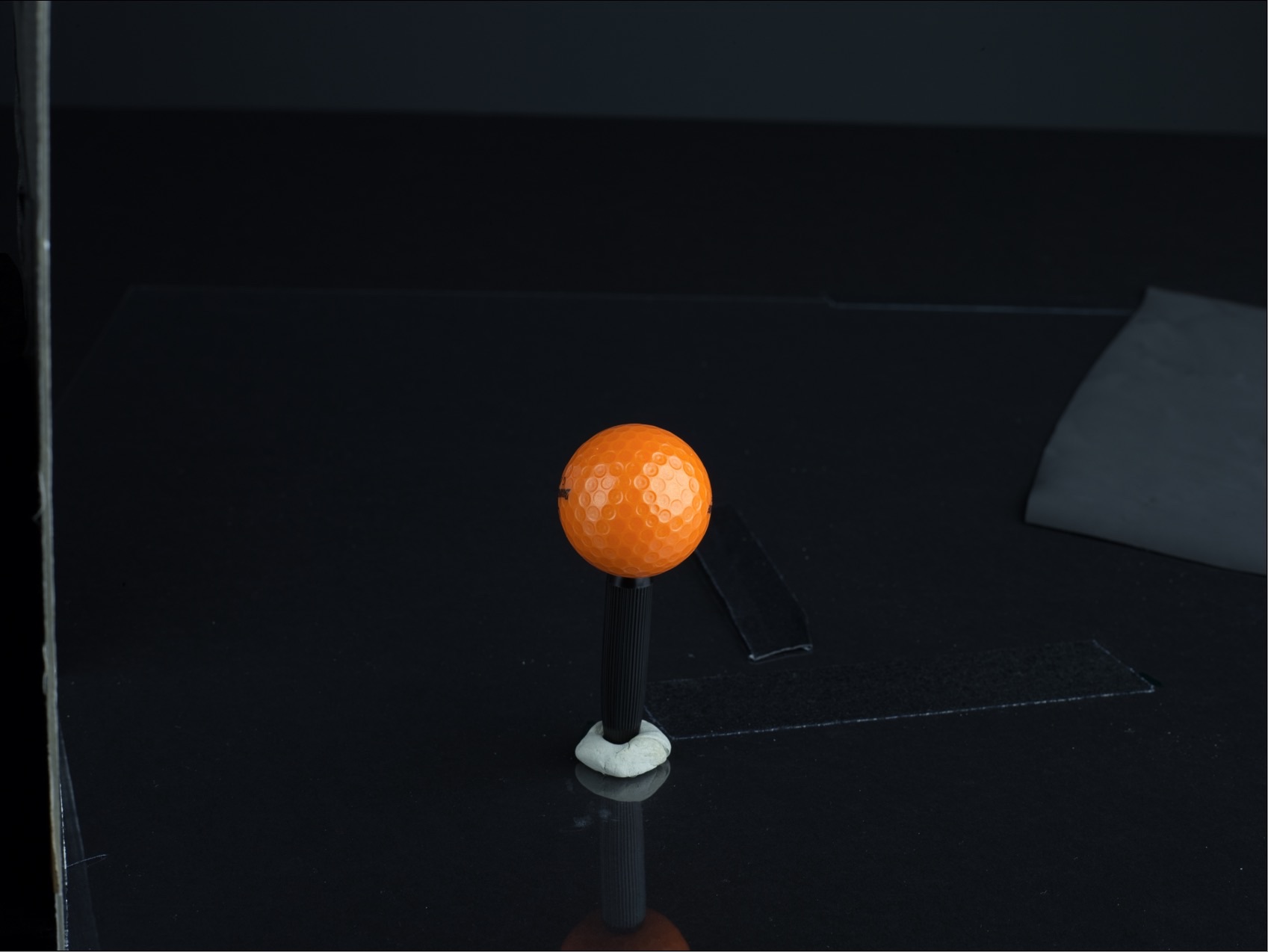
Golf Ball on 60mp, f14, as close as I could get with front to edge detail intact – 1095 pixel ball radius
Combine that with the fact I often had to shoot objects whose complex shape, or ala golfball – spherical shape, rendered any of those movements useless when it came to maximizing depth of field. I was always limited in creating the most dynamic images by not being able to use focal lengths to their highest value, which to me is the specific mm that they are rated for with no crop.
The New kid on the Block
Ever since firmware version 2 on the Phase One XF camera, I’ve been making use of the built in automated focus stacking to:
- Avoid tedious setup of view camera and the slow capture rate of Copal-0 lenses
- Maximize image size in frame while maintaining focus throughout
- Greater ease in the matching of image setup, sometimes a year since the last shot of same product type for the same client.
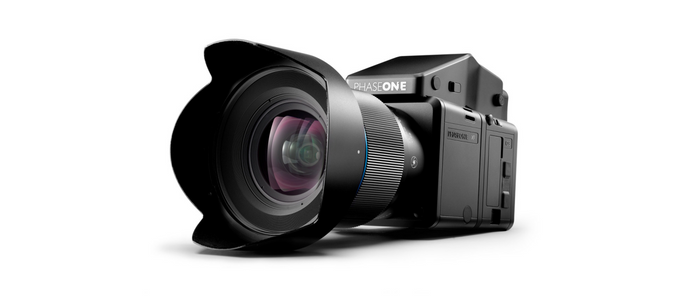
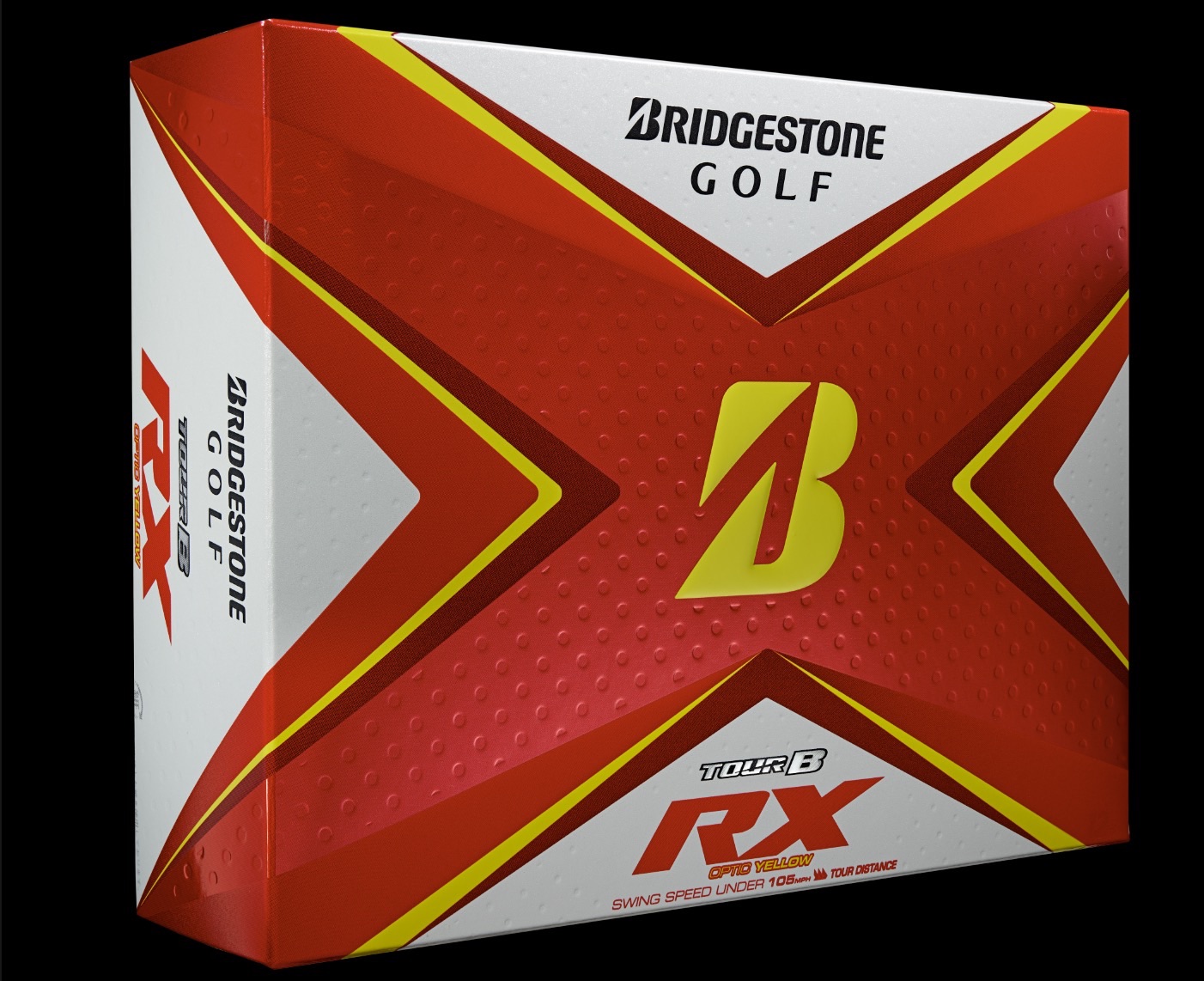
Box Hero shot on 55LS, pushed into minimum focus distance and stacked with 15 frames
(The Phase One Schneider Kreuznach 55LS is one of my favorite studio lenses to use because of its ’35 on 35′ perspective of things and its short focusing distance allowing closure to subject that is only exceeded by the 120 macro)
(The Phase One 120LS provides amazing clarity when you don’t have to shoot it at f32, but instead down in the f8 range where it is truly glorious)
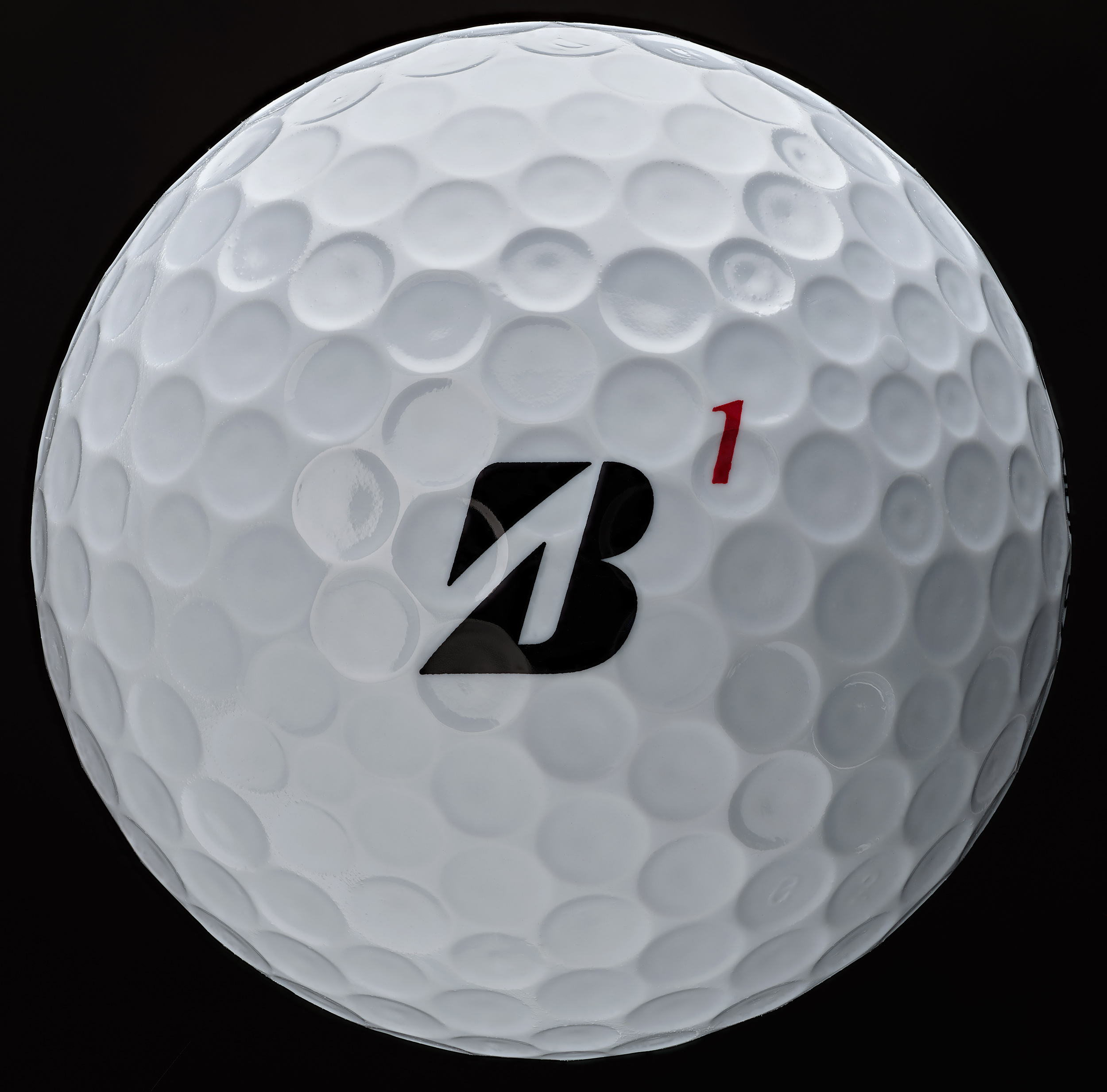
44-image Focus Stack final with sensor-native 9000 pixel Ball Radius from IQ4-150 / XF / 120LS Macro
I found that Focus stacking and strobe posed some new challenges to my day, because if one of my three strobe lights on set didn’t fire once in a 33-frame stack, the whole stack would need to be thrown away and a fresh one started.
Generally speaking, I’d have to keep a decent awareness on set of the bee-boop-bop, bee-boop-bop, audible confirmations of the strobes firing and if I heard a break in that cadence I’d know the stack was trashed. Occasionally, you could have a strobe failure that would result in a confirmation beep but the exposure may not be spot on, or even down enough to be counted as a failure and if I didn’t notice it in the thumbnails of the single monitor at the shoot station rolling through, I could find myself in trouble later when I only discovered the missed exposure while I was color grading and exporting files.
Even with exceptional strobe systems like Profoto or Broncolor, I became used to watching 4+ increments of 8-bit color number number variation dancing endlessly between exposures, especially on battery driven mono-heads.
These variations were never enough to produce problems in my files as my stacking software, Helicon Focus does a good job of equalizing exposures while assembling a multi-image stack into a single file, but it was always somewhat disconcerting when trying to maximize image integrity that when scrolling through image-stack frames I’d see the old-timey movie effect going on.
Additionally, I was also acutely aware of how many actuations I was tasking the camera body to perform, with any ‘final’ shot taking 9, 15, or even 44 images, to acquire the necessary slices of the whole, to be combined later in the stacking software. 7 ‘hero’ golf ball images, 44 frames each, 3 angles per ball, would lead to 924 Focal Plane and Leaf Shutter actuations for just that portion of that day’s shoot.
Enter Electronic Shutter
When paired with Phase One IQ3-100 and IQ4-150 digital backs, the XF camera has the ability to shoot in a purely Electronic Shutter mode (ES) and the only mechanical operation of the camera other than the movement of the autofocus motor, is on the very first actuations of an image series when the camera gathers its black frame reference by way of exposing a closed shutter. 924 mechanical actuation is then reduced to potentially only 1 for that series. ( I prefer to invoke the sub-menu on the XF Focus Stack tool to enable ES exposures there, so that when I leave the tool, the camera is back to standard FPS/LS operation without having to go into menus and change to or back from default behavior, so I would likely burn 10 frames on the physical camera while testing the shot set up before entering the Focus Stack tool and continuing through the bulk of the shooting using ES.)
Fully Electronic Shutter is largely incompatible with strobe however, requiring more than a second of total exposure to work with flashing units, so my ES stacking had largely been limited to natural light in my personal work, other than occasionally working in a completely dark studio with the jarring flashes every other second of the flash units after they’ve recycled. (Not generally a nice way to spend a day)
In the past, shooting by hot lights, (otherwise known as continuous lighting) involved… well, it being really hot. Last thing you wanted to do on a 95º Atlanta day was run several space-heaters in your studio and just let the HVAC system fight it out, especially when your proximity to the lamps on set was close.
Tungsten based lights, just like the incandescent bulbs that used to be the norm in your house, either burned in the 3200-3400º Kelvin range or were color corrected to be something closer to Daylight at 5600º Kelvin. Tungsten is basically just a controlled fire in a vacuum and so its heat rivals devices meant to purposefully light fires. Great care in handling was necessary because the active filament was fragile and anything from a serious to mild bump while burning could break the bulb. Post-shoot cool down could be excessive with the lamps, lamp housings, modifiers and even stands holding the heat for a good portion of an hour after the active power was arrested and the bulb had long since stopped glowing.
The advent of HMI (Hydrargyrum Medium-Arc Iodide, say that 3x fast) gave us greatly lower operating temperatures per lumen created compared to tungsten, as well as a native 5600º cool color temperature, but the units were really expensive and the ballasts were roughly as large as a 2400 watt/second strobe power pack. Don’t even think about firing one of these things up without plugging into a good outlet or generator because no battery power was ever possible.
Fast forward a few more years and Photographers jumped at the newer LED technology, hoping that the relatively small power consumption per amp-hour drawn would be the fix, but issues of color quality arose, when cheap RGB LEDs attempted to create white light. Even if doing so to your eye, your digital sensor and the wavelength response of your subject matter could tell a very different tale. Various high output / high color fidelity LEDs entered to fill that void, both from new companies as well as established cinema lighting brands but the cost of theses units are considerable and a multi-light kit could get into the realm of 100 megapixel digital back prices.
Enter a NEW continuous light solution, Nanlite
Late last summer we had the opportunity to test a new brand of LED lighting, Nanlite and for the first time shooting with a 15-year commercial client, I shot continuous light rather than strobe.
Continuous lighting has the definite benefit of being completely stable, providing exactly the same exposure with zero variation frame to frame, combined with the ease of using ES for my focus stacking.
The Nanlite units are well built, have a nice case, bundled accessories and produce really nice, powerful light. Scalable by 1% output increments, they allowed me to shoot 1/125th at f5.6 on set, set to 75% power for the above image sequence of the Arca Swiss Monolith, using the Forza 500 as my top light through a 2×3′ softbox and Forza 300 through a 1×4′ sofbox as my side light.
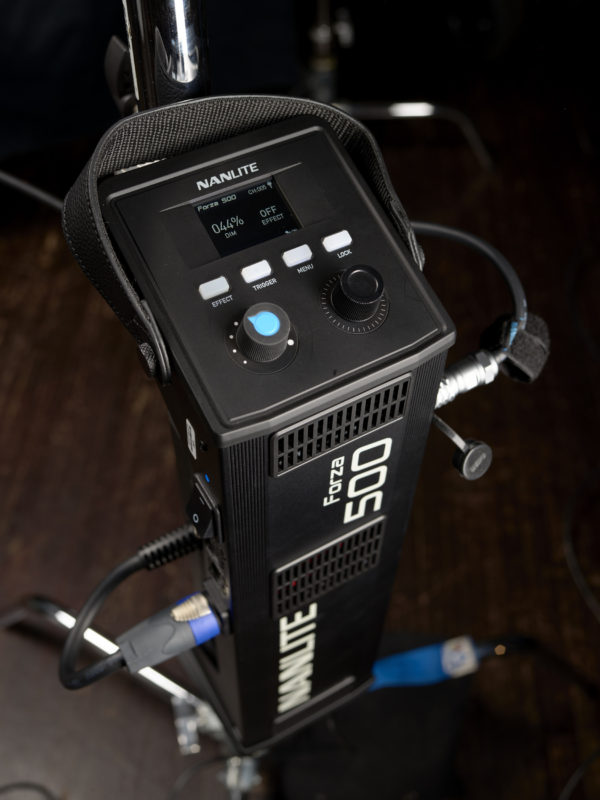
Nanlite Forza 500 Ballast mounted to C-stand via included bracket
On my commercial set, I used my exact same softboxes as before, but used Bowen’s mount speedrings instead. My existing grids worked as predicted (with a little gaff tape) on the standard reflectors, and for the first time in a very long while, I made use of focused light with the Nanlite Fresnel lens / barndoor combination. For my shoot I used a mix of the Forza 60, 300 & 500 units, along with a 14×20” light panel in their Compact series, all rated for daylight color balance. (I ended up not needing the Forza 500 at all on that set, as I was happy to work with 1/25th second exposures @ f6.3 and the 500 unit had way too much oomph, even at ISO 50.
I worked the entire day around these lights and found no negative impact when it came to heat working literally right on top of them AND the AC converter portion of the ballast can be swapped for BATTERIES rated for 2-hours of full-power run time.
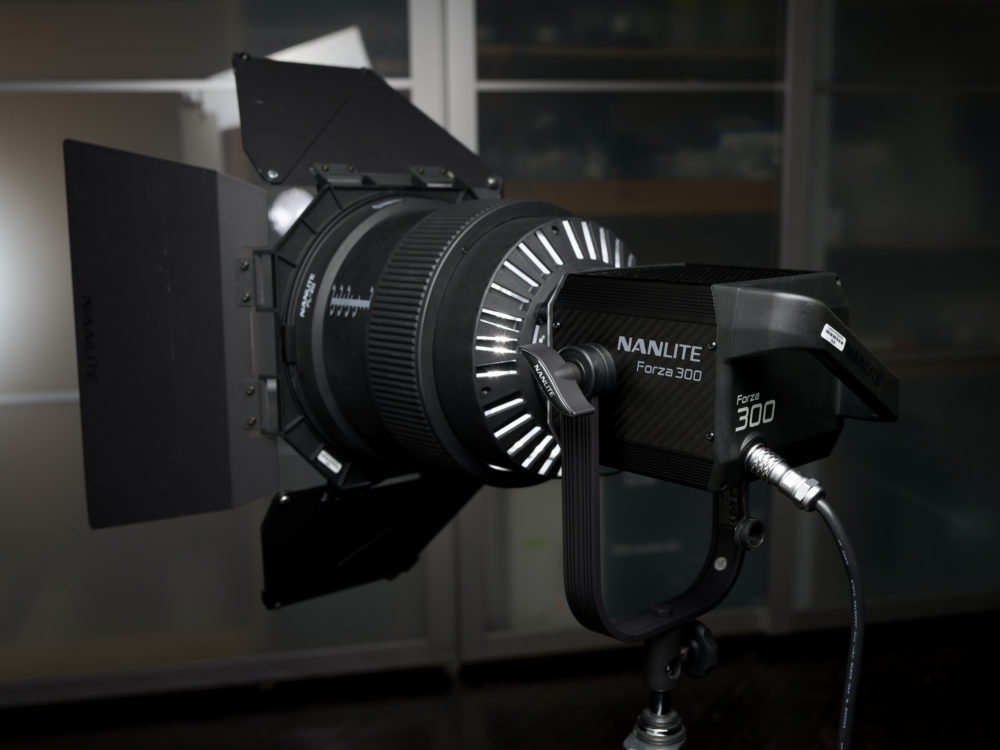
Nanlite Forza 300 Daylight Head with FL-20 Zoom Fresnel & Barn Doors
The light from these units is so nice in fact, that the CRI (Color Rendering Index) rating system that many consumers, as well as professional LED’s, are rated by, proves somewhat inadequate to describe the fidelity of these lamps. High CRI values can be gamed by poor quality lights by increasing performance in the 15 segmented color ranges that the test criteria contain, often lending to horrible color rendering across the bulk of the visible light emitted, like stabbing 15 hardpoints on a curve in software and watching the resulting aftermath.
In researching the color index side of this that I didn’t know, I found the best singular resource for explanations with regards to the differences between color fidelity tests as well as a significant body of rated equipment at Indie Cinema Academy .
From their informative site:
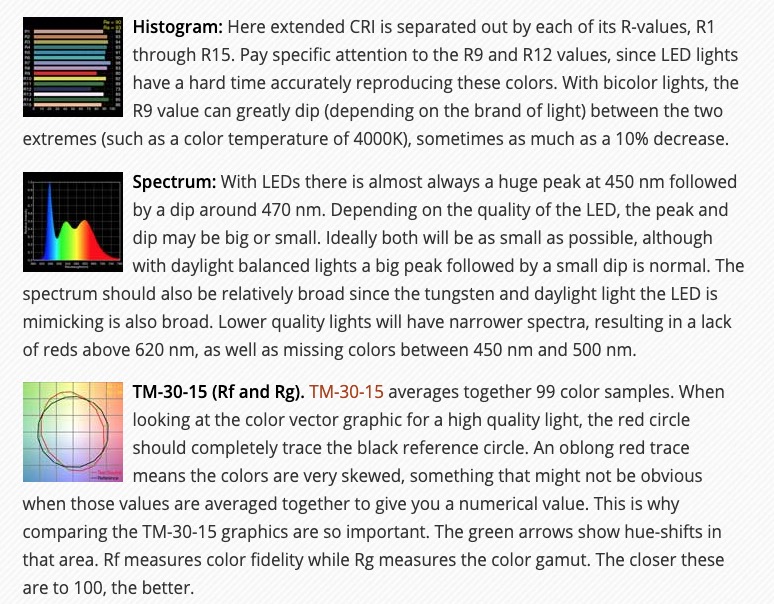
So, if we look at daylight on a cloudy day, we see a chart that looks like this:
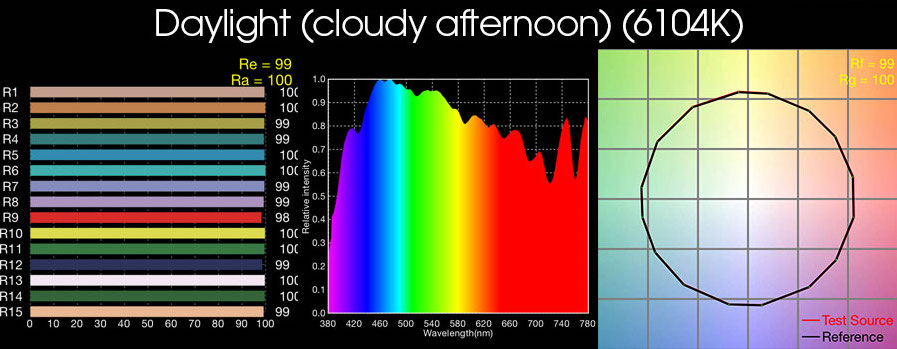
The three individual ratings come off of a color meter like the Sekonic C-800 and I’m not going to name any manufacturer names here, but the following charts are from a unit I would describe as a direct competitor to Nanlite at a price point 50% greater:
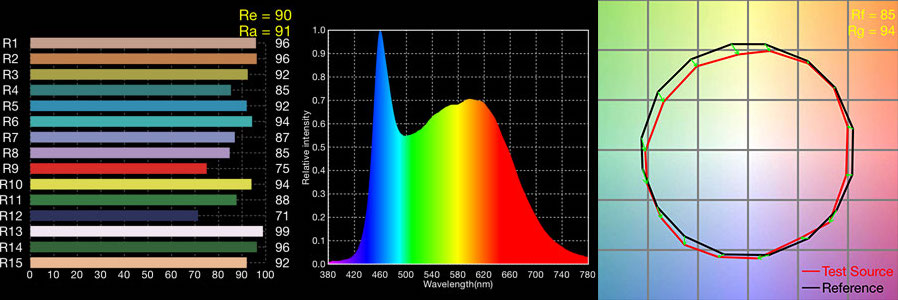
As you can see, the CRi is down at ~90 and the TM-30-15 red circle describes the variability from daylight across 99 samples of color.
They have not reviewed the Nanlite product, as it is much newer than their test, but I can attest that by color meter in the shop here, the Nanlite Forza 300 that we have in our active rental inventory performed very well.
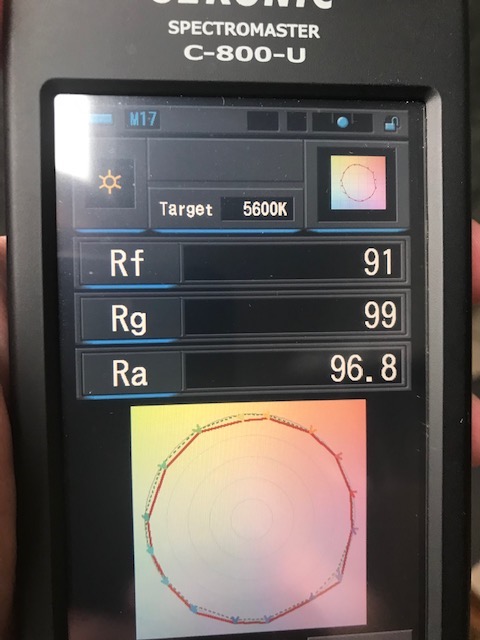
In Review:
Now, let me say that there’s a time and a place for each piece of gear that I employ to image upon the digital plane.
Strobe photography definitely has its benefits over continuous light sources, especially when mixing light with the sun. Our star sits 93 million miles away from us and the only way not to get burned (either on our skin or cooked capture exposure) is to limit the time we spend in it. In this way, strobe is king because when combined with the high-speed sync possibilities of leaf shutters or HHS strobe systems, our shutter speed can limit the sun’s influence on our exposure and our strobes then have the power to replace its light.
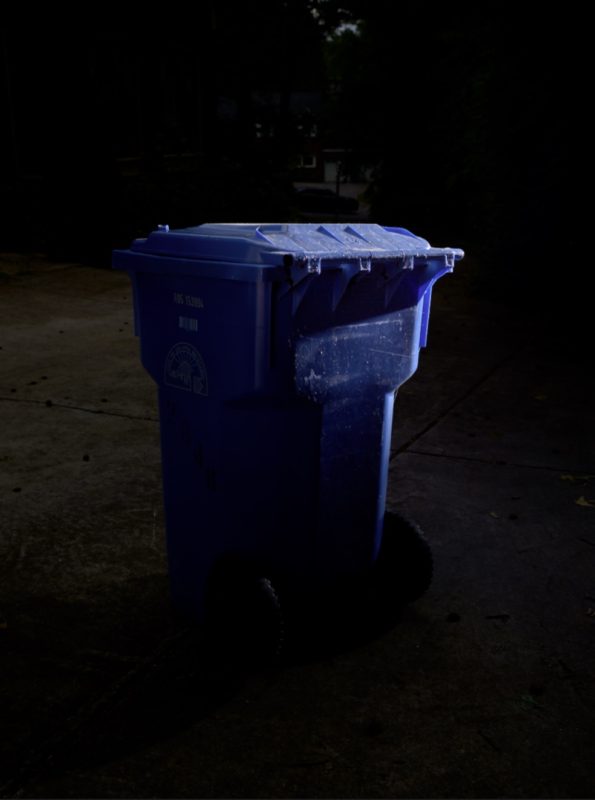
Film Noir Recycling Bin – Shot mid-sunny day, ISO 50 / f8 / 1/1600th with 500 w/s Profoto B1x
Also, when objects are moving, the best strobe systems have exceedingly short flash durations that can freeze motion, in some cases at a faster speed than even the fastest mechanical shutter speeds are capable of.
Even the Forza 300 is certainly brighter than you want to stare at, but don’t expect to stop motion even with the Forza 500 in the studio. There is a vast difference in the requirements of light to expose a scene properly and to freeze motion on a scene. At ISO 200, at f/2.8 with around 10′ distance to subject, I could only get 1/640th of a second exposure, which is considerably slower than the 1/4000th exposure of a Profoto D2 500 shot 6-stops shy of full output exposure. (D2 at output level 4 was set to match the f2.8 ISO 200 exposure set by the Nanlite)
This all said the unexpected benefit for me at the end of an enormous studio shoot day was that I didn’t feel battered by the near-constant flashing and beeping that would normally be there when I shot strobe. My camera showed less than a hundred frames while the computer showed hundreds of gigabytes of data. Also, what you see is what you get of Live View was very nice with the Nanlite as there’s of course zero difference in light ratios between preview and exposure.
I can easily say that these Nanlites are now my preferred lights for table-top studio shooting. -BK
And here is some really good news – all Nanlite Forza products are now 25% off through June 30. Contact us today to place an order.